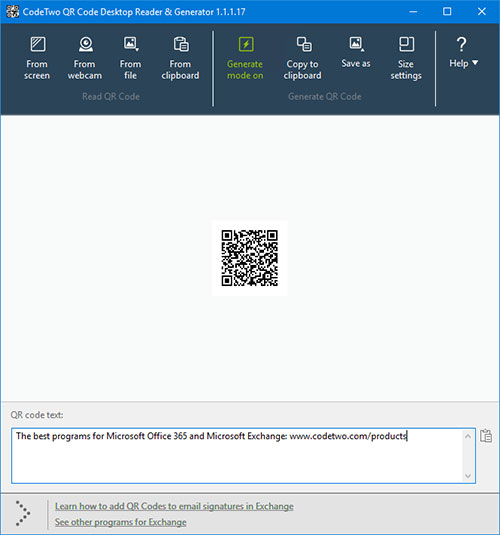

Scanners spot these elements and decode the data stored in the data modules. Why? Because it helps the scanners differentiate between the QR Code from its surroundings.ĭata modules: These make the central part of the QR Code where all the data is stored.Īll these elements are important for a QR Code to scan well. It is very important for the scannability. Quiet zone: It is the margin around the QR Code. It helps scanners identify the orientation of QR Code image. However, it’s much smaller and is located within the data matrix. Because of position markers, you can scan the QR Codes at any angle-360 degrees scannability.Īlignment marker: This is the fourth square-shaped structure that looks like QR Code’s eye. These patterns indicate the direction in which the QR Code is placed. Position markers: These are the three large eye-like square-shaped structures at the corners of the QR Code. How is a QR Code scannedĪ QR Code has the following major elements that play a crucial role in its scannability:
#Qr code reader from screenshot how to
In this article, we will discuss how to scan a QR Code from a screenshot in three different ways.īefore we proceed, let’s see how QR Code scanning works. You rather want to scan it from an image or screenshot in your phone’s gallery. It could be to make a payment, access a document, verify your identity for official purposes, etc.īut here’s the thing-you don’t want to scan the QR Code with its image in front of you. You have seen a QR Code too and you want to scan it. Hence, it is safe to say that the world is now painted with QR Codes! Why? Because it clearly shows that many users are scanning the same QR Code more than once.Įver since the pandemic, QR codes have become even more famous due to their contactless nature. The massive rise in the number of interactions is pretty interesting. 94% increase in the number of interactions with QR Codes.98% rise in the number of interactions per object.According to a survey by Bluebite, the change in QR Code usage was seen as followers from 2018 to 2020: Their usage has increased greatly over the last decade. From the billing counters of malls and supermarkets to medical reports, you can find them everywhere.


 0 kommentar(er)
0 kommentar(er)
